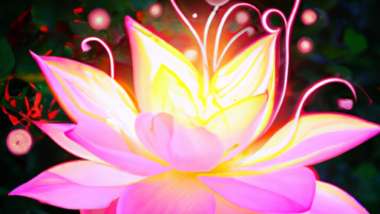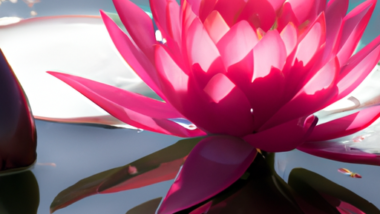In this article, you will discover a range of techniques to help you find peace and resilience during challenging times through the practice of guided meditation. We all experience difficult moments in life, and it can be tough to navigate through them. However, with the power of meditation, you can learn how to find inner calmness and build resilience to face whatever comes your way. Through guided meditation, you will explore various techniques that will support you in finding peace, strength, and the ability to bounce back during these challenging times. So, if you’re ready to embark on a journey of self-discovery and find peace within, let’s dive into the world of guided meditation together.
Techniques for Finding Peace and Resilience During Challenging Times Through Guided Meditation
In times of difficulty and uncertainty, finding inner peace and resilience becomes crucial for maintaining mental and emotional well-being. One powerful tool that can help achieve this is guided meditation. Guided meditation is a practice that involves a trained instructor or a recorded voice guiding you through a series of visualizations, affirmations, and relaxation techniques. By allowing yourself to be led through the meditation process, you can find solace and build strength from within.
Understanding the Concept of Guided Meditation
Guided meditation is a form of meditation where you are provided with verbal guidance to help you focus your attention and enter a state of deep relaxation. Unlike traditional meditation, where you meditate in silence, guided meditation provides prompts and instructions to support your practice. The purpose of guided meditation is to assist you in attaining calmness, clarity, and mindfulness, even amidst challenging circumstances.
Importance of Guided Meditation During Difficult Times
During challenging times, guided meditation can be an invaluable tool for maintaining mental and emotional well-being. It offers numerous benefits:
Managing Stress and Anxiety
Guided meditation provides a structured approach to relaxation, making it particularly effective in reducing stress and anxiety. It encourages you to let go of troubling thoughts and focus on the present moment, enabling you to find a sense of calm and balance.
Cultivating Emotional Resilience
Emotional resilience refers to the ability to bounce back from adversity and cope with challenging emotions. Guided meditation helps cultivate resilience by teaching you how to acknowledge and embrace your feelings while also providing techniques for releasing negative emotions and fostering a positive mindset.
Enhancing Mental Clarity and Focus
During challenging times, our minds can become overwhelmed with worry and distraction. Guided meditation helps regain mental clarity and focus by training the mind to concentrate on the present moment. By practicing guided meditation regularly, you can improve your ability to stay focused and make clear decisions.
Promoting Self-Awareness and Mindfulness
Guided meditation promotes self-awareness by encouraging you to explore and understand your thoughts, emotions, and bodily sensations. This heightened awareness allows you to recognize triggers, patterns, and areas of growth, leading to increased mindfulness in your daily life.
Preparing Yourself for Guided Meditation
Before starting a guided meditation session, it is essential to create a conducive environment and ensure your personal comfort. Here are some steps to help you prepare:
Finding a Quiet and Comfortable Space
Choose a quiet space in your home that is free from disturbances. Ideally, it should be a place where you feel relaxed and at ease. Set up a comfortable seating arrangement or use a soft cushion to support your posture.
Eliminating Distractions
Turn off your mobile phone or put it on silent mode to minimize distractions during the meditation practice. Inform your family members or housemates about your meditation time, so they can respect your need for tranquility.
Wearing Comfortable Clothing
Wear loose and comfortable clothing that allows unrestricted movement and helps you maintain a sense of ease during the meditation practice.
Choosing a Convenient Time
Select a time of day when you are least likely to be interrupted and can dedicate yourself fully to the meditation practice. This could be early morning, midday, or before bedtime – choose whatever works best for you.
Posture and Positioning
Adopt a posture that is both comfortable and alert. You can sit cross-legged on a cushion or a chair with your feet planted firmly on the ground. Ensure your spine is straight but not rigid, allowing the energy to flow freely.
Selecting a Suitable Guided Meditation Technique
There are various guided meditation techniques that you can choose from, depending on your preferences and specific needs. Here are some popular options:
Body-Based Meditation
Body-based meditation involves focusing on the sensations and movements of your body. It helps cultivate awareness of bodily sensations, relaxation, and a sense of embodiment.
Breath Awareness Meditation
Breath awareness meditation centers around observing and regulating your breath. It enhances mindfulness and promotes a sense of calm and centeredness.
Loving-Kindness Meditation
Loving-kindness meditation involves cultivating feelings of love, compassion, and goodwill towards oneself and others. It is particularly beneficial for fostering emotional well-being and nurturing positive relationships.
Metta Meditation
Similar to loving-kindness meditation, metta meditation focuses on sending positive intentions and loving-kindness towards oneself and others. It helps develop empathy, patience, and a greater sense of interconnectedness.
Walking Meditation
If sitting still for long periods is challenging, walking meditation can be a suitable alternative. It involves walking slowly and mindfully, paying attention to each step and the sensations in your body.
Progressive Muscle Relaxation
Progressive muscle relaxation requires systematically tensing and relaxing different muscle groups in your body, promoting deep relaxation and stress relief.
Creating a Calm and Peaceful Environment
Creating a calm and peaceful environment for your guided meditation practice can greatly enhance its effectiveness. Here are some tips for setting up your meditation space:
Decluttering and Organizing the Space
Clear away any clutter or distractions from your meditation space. This includes removing unnecessary items, organizing your surroundings, and ensuring a clean and serene environment.
Adjusting Lighting and Temperature
Dim the lights or use soft, indirect lighting to create a soothing atmosphere. Ensure the temperature is comfortable and conducive to relaxation.
Adding Relaxing Elements
Incorporate elements that promote relaxation, such as plants, candles, or a small water fountain. These natural elements can enhance the sense of tranquility and create a more serene ambiance.
Using Aromatherapy
Consider using essential oils or incense known for their calming properties, such as lavender or chamomile. The scent can help induce relaxation and set a peaceful ambience.
Playing Soothing Music or Nature Sounds
Playing soft and gentle background music or nature sounds, such as rainforest or ocean waves, can aid in creating a soothing atmosphere for your guided meditation practice.
Setting Intentions for Guided Meditation
Before starting a guided meditation session, it is beneficial to set clear intentions for your practice. Here are some aspects to consider:
Clarifying Your Purpose
Identify the specific reasons why you are engaging in guided meditation. Is it to reduce stress, improve focus, or cultivate self-compassion? Clarifying your purpose will help you stay focused and committed throughout your practice.
Identifying Areas of Vulnerability or Discomfort
Reflect on any areas of vulnerability or discomfort that you may be experiencing. This may include emotional pain, sources of stress, or challenging relationships. By addressing these areas during your guided meditation, you can begin the healing process.
Focusing on Emotional Healing
If you are going through challenging times, guide your meditation towards emotional healing and resilience. Allow yourself to explore and process difficult emotions, while also nurturing compassion and self-care.
Setting Realistic Expectations
It is important to set realistic expectations for yourself and your meditation practice. Remember that meditation is a journey, and progress takes time. Embrace the process and be gentle with yourself as you navigate through challenging times.
Breathing Techniques for Relaxation and Inner Peace
Breathing techniques play a crucial role in guided meditation as they can help induce a state of calmness and inner peace. Here are some breathing exercises you can incorporate into your practice:
Deep Abdominal Breathing
Deep abdominal breathing involves consciously inhaling deeply through your nose, allowing your abdomen to expand fully. Exhale slowly through your mouth, emptying your lungs completely. This technique promotes relaxation and activates the body’s natural relaxation response.
Counted Breathing
Counted breathing involves inhaling for a specific count, holding the breath briefly, and then exhaling for the same count. For example, you can inhale for a count of four, hold for four, and exhale for four. This technique helps regulate the breath and calms the mind.
Alternate Nostril Breathing
Alternate nostril breathing is a pranayama technique that involves using your thumb and ring finger to alternate between closing one nostril and breathing in through the other. It balances the flow of energy in your body and promotes a sense of harmony.
4-7-8 Breathing
The 4-7-8 breathing technique consists of inhaling for a count of four, holding the breath for a count of seven, and exhaling slowly for a count of eight. This technique can help reduce anxiety, induce relaxation, and quiet the mind.
Box Breathing
Box breathing involves inhaling deeply for a count of four, holding the breath for a count of four, exhaling for a count of four, and holding the breath out for a count of four. This technique promotes balance and stability, allowing you to find a sense of calm within.
Body Scan Meditation for Finding Resilience
Body scan meditation is a technique that involves systematically directing your attention through different parts of your body, releasing tension and cultivating resilience. Here’s how you can practice body scan meditation:
Bringing Awareness to Different Body Parts
Start by finding a comfortable position, either lying down or sitting upright. Begin by focusing your attention on your feet and slowly bring your awareness up through your body, paying attention to each body part, from the toes to the top of your head.
Releasing Tension and Stress
As you direct your attention to each body part, consciously release any tension or stress you may be holding in that area. Visualize the tension melting away or imagine yourself exhaling it out with each breath.
Cultivating a Sense of Connection with Your Body
Allow yourself to feel a sense of connection with your body as you scan through it. Notice any sensations or areas of discomfort without judgment or resistance. Cultivate a compassionate attitude towards your body and its needs.
Noting Sensations and Letting Go
As you move through each body part, take note of any sensations or emotions that arise. Acknowledge them without judgment, and then gently let them go, returning your focus to the present moment and the body part you are scanning.
Using Guided Meditation Apps or Resources
If you prefer guided meditation resources, there are several options available that can assist you in finding peace and resilience. Here are some suggestions:
Exploring Popular Guided Meditation Apps
Many smartphone apps offer a wide range of guided meditations to help you find peace during challenging times. Some popular apps include Headspace, Calm, Insight Timer, and 10% Happier. These apps provide a variety of guided meditations tailored to different needs and time constraints.
Seeking Guided Meditations on Online Platforms
Numerous websites and online platforms offer guided meditation resources. You can find recorded guided meditations on platforms like YouTube, SoundCloud, and various meditation websites. Explore different instructors and styles to find the guidance that resonates with you.
Listening to Guided Meditation Podcasts
Podcasts are another great resource for guided meditation. Many podcast hosts create episodes dedicated to guided meditations of varying lengths and themes. Subscribe to a meditation podcast that aligns with your interests and preferences.
Attending Guided Meditation Classes or Workshops
Consider attending guided meditation classes or workshops offered in your local community or online. In-person classes provide an opportunity to learn from experienced instructors and connect with like-minded individuals. If attending in person is not possible, online workshops and classes can offer a similar experience.
In conclusion, guided meditation can act as a powerful tool in finding peace and resilience during challenging times. By understanding the concept of guided meditation, preparing yourself adequately, and exploring suitable techniques, you can cultivate inner strength and emotional well-being. Creating a calm environment, setting clear intentions, and incorporating breathing exercises, body scan meditation, and guided meditation resources can further enhance the effectiveness of your practice. Remember to be patient and compassionate towards yourself as you embark on this journey of finding peace and resilience through guided meditation.
Hi, I’m the Editor of Daily Guided Meditation. Meditation is not just a practice for me, but a way of life. I believe in the power of mindfulness to bring peace and balance into our busy lives. That’s why I created this website, where you can find daily guided meditations to help you on your journey of self-discovery and inner peace. Join our community and experience the transformative benefits of mindfulness through soothing meditations, relaxation techniques, and valuable resources. Prioritize self-care and start your day with intention by exploring our website today. Together, let’s find serenity amidst the chaos.


